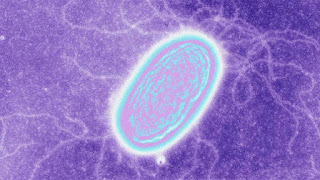Can bacteria produce electricity?
Can bacteria produce electricity?
The depletion of fossil fuel reserves, global warming, energy security
and the need for clean, cheap fuels has made developing sources of renewable
energy a global research priority. Microbial Fuel Cells (MFCs) have the potential
to generate renewable electricity from a vast array of carbon sources such as
waste-water, agricultural by-products and industrial pollutants. MFCs
are not yet commercialized but they show great promise as a method of water
treatment and as power sources for environmental sensors and are the promising
factors for future. The power produced by these systems is currently limited,
primarily by high internal (ohmic) resistance. The optimization of MFC systems is a highly
multidisciplinary area of research and two complementary areas of work are
required - firstly to design more efficient hardware for the cells by
traditional engineering and secondly to understand and improve the interaction
and electron transport between microbes and electrode via biological
engineering.
One of the most important engineering challenges in MFC development is
the efficient electron transfer from the bacteria to the anode. To date three
possible methods of transferring electrons from bacterial cells to the
electrode have been identified - directly via cell surface cytochromes (
Shewanella spp), via pilli acting as nanowires (Geobacter spp) or via the
production of soluble electron mediator compounds (e.g. Pseudomonas sp
phenazine production). Fundamental to cell contact with the anode, electron
transfer and thus the functioning of the MFC is the formation of specialized
biofilms on the electrode surface. It has been shown that the power output of
MFCs and that the power density was directly dependent on biofilm growth and
composition.
We are using a genetic engineering approach to reengineer bacteria to
certainly and efficiently generate and transfer electrons to microbial fuel
cell electrodes resulting in a highly versatile, reliable and sustainable
energy sources. We aim to -
1.
Create a synthetic biology toolbox of biological parts and devices for
the easy engineering of electrogenic microbial strains and the construction of
genetic circuits for enhanced electron transfer capabilities.
2.
Investigate the structure, composition and activities of electrode
biofilms.
3.
The versatility of carbon metabolism in the bacteria will be engineered
to expand the range and efficiency of utilising pollutants as carbon sources
for electricity generating metabolism closing the waste - energy loop.
For more details visit the link: https://bacteriology.infectiousconferences.com/




Thanks For Sharing this information with us
ReplyDeleteBest Infectious Disease Doctor in Mumbai